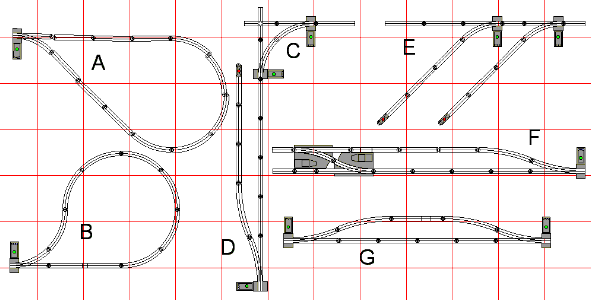
Copyright 2002 T. Sheil & A. Sheil All Rights Reserved
How switches change the motion
The switch configurations shown below are based on those used by real railroads. they allow you to redirect trains in different modes and directions. They are clearly illustrated here for your perusal.

Basic shapes: A) Reverse Loop B) tight reverse loop C) adding turn to crossover D) Simple spur siding E) Double siding
F) siding with two-switch connection of two tracks G) Basic passing type siding
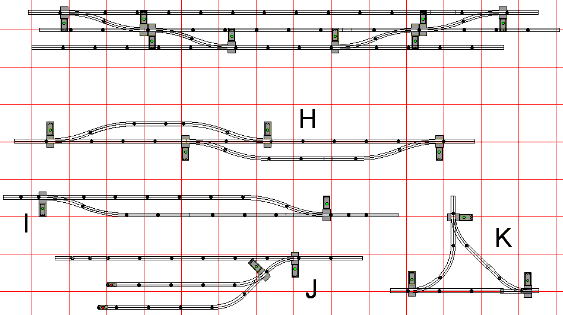
H) Interwoven passing sidings (allow trains to pass on single track) I) Rhomboidal siding J) Sidings K) Wye
Top of illustration shows track-to-track connections in yard or three-track mainline.
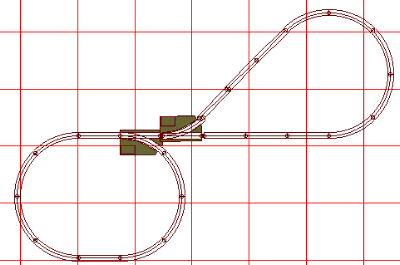
A train going clockwise through the lower oval would have its direction changed if it entered the reverse loop on upper right. To enter the reverse loop afterward, the train would have to reverse direction and back into it. |
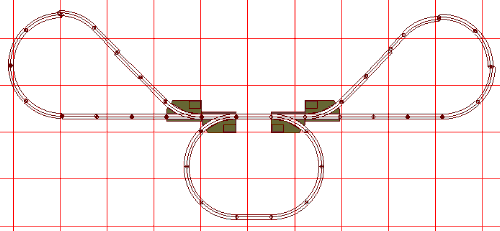
A pair of opposing reverse loops would allow a train to traverse all loops while going forward. The train itself would not have to reverse, i.e. "back in". |
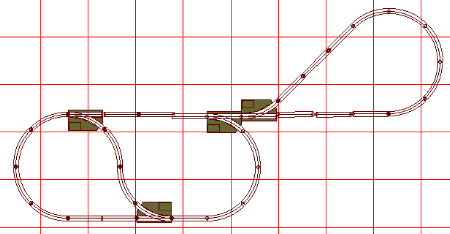
Another reversing track is the track bisecting the lower oval. Entering it, a clockwise train would end up running counterclockwise. The reverse loop in upper right corner would do the same. The reverse track uses same-hand switches, in this example both right-hand. |
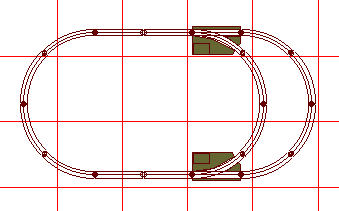
This track would not reverse the train. The clockwise train would continue going clockwise. Note that here, the switches are opposites: one left- hand, one right. |
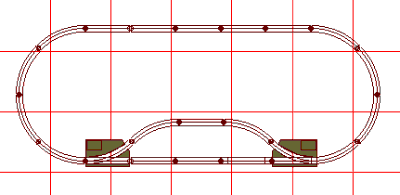
With the back ends of switches nearest the oval's curves, you get a passing siding. These are opposite-hand switches: one right and one left |
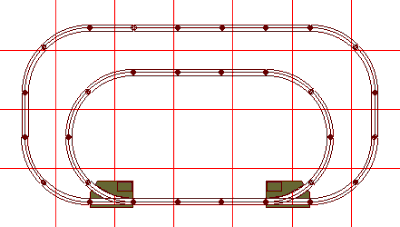
With the back ends facing each other, you get a second inside loop. Again, these are opposite-hand switches |
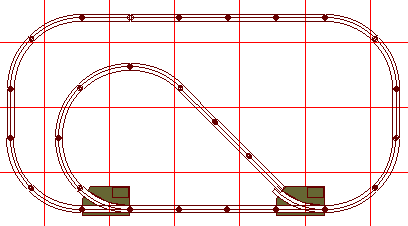
Same-hand switches create a reversing loop inside the oval. These are both right-handed. |
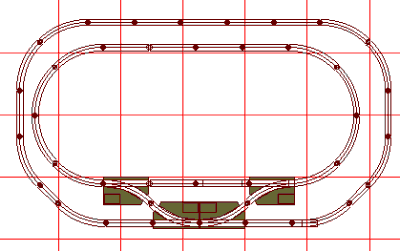
Here two pairs of switches make two separate ovals, one inside the other, Two trains can run independently. Note that this involves pairing the switches thus: right-hand to right-hand, and left to left. |
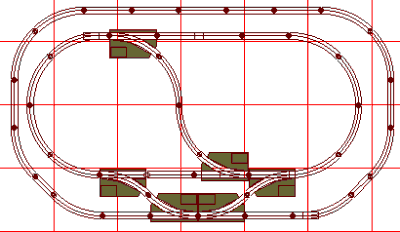
Here we have a reversing loop inside the oval. |
Continuous running is abetted when a train can continue going forward without having to back up. Good use of reverse tracks makes for interesting operation. Here you get a basic idea of how switches move a train. Combine what you have learned were with what you have learned of ovals - be creative! |
Click here to get back to the main Ovalling page
Click here to return to All Gauge Model Railroading main page